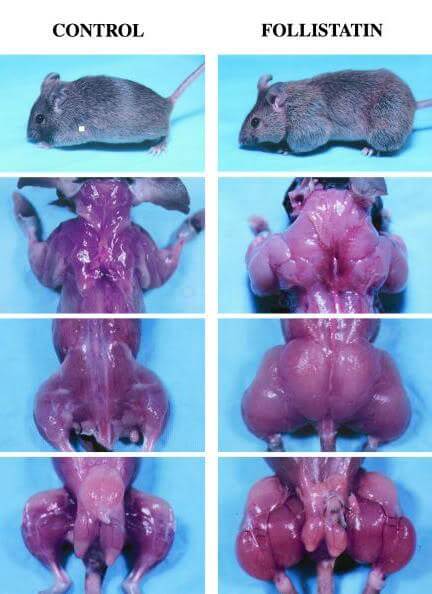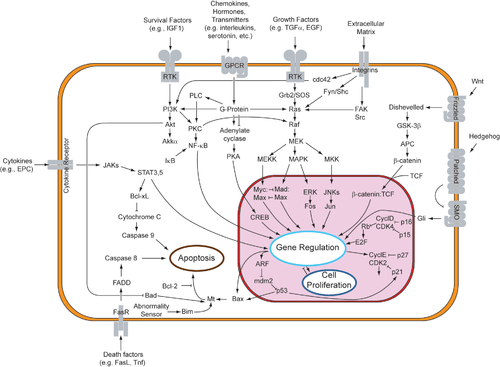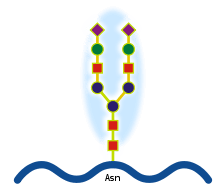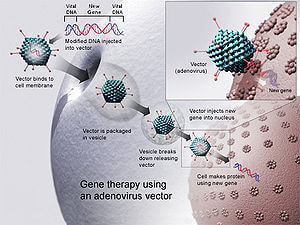How Follistatin Works
How Follistatin Suppresses Myostatin
Its primarily through the suppression of myostatin that follistatin achieves its theoretical effects on the human body – over the course of this section, we’re going to explain precisely what myostatin is so that you understand how its suppression could be of benefit to you.
The Role Of Myostatin In The Body
Myostatin is a regulatory growth factor that ultimately serves to restrict how much muscle mass the body is capable of generating. As such, it’s probably fairly easy to understand why anyone with aesthetically charged goals would seek to diminish its presence.
Also known as GDF8 (Growth And Differentiation Factor 8); myostatin sets to work during the early embryonic stage of our development and continues to exert its control on our musculature throughout our adult life.
It’s the MTSN gene that ultimately contains the “instructions” the body needs to follow in order to produce myostatin and all other members of the growth and differentiation factor “family.”

This gene, only recently discovered (in 1997) by the scientists Se-Jin Lee and Alexandra McPherron, ultimately paved the way for further exploration and the subsequent discovery of myostatin.
The growth and differentiation factor family are all classed as proteins – or rather, a “subfamily” of them.
These protein varieties are designed to regulate and control growth as a means of ensuring that we do not surpass our “natural” capacity; myostatin in particular is found in the cells of skeletal muscle and is charged specifically with the regulation of this aspect of our development.
How Does Myostatin Inhibit Muscle Growth?
All muscle cells have inbuilt autocrine functionality designed to instigate, optimise and utilise the various anabolic processes of the body; autocrine signalling merely means to send signals within the cells of the body to instigate hormonal action.
Myostatin serves to actively disrupt and inhibit this process. Further to this, it has also been shown to block / inhibit AKT functionality – AKT is classed as a protein “kinase.”
Kinase enzymes play an important role in the ATP (adenosine triphosphate) utilisation process. Without ATP, all physically bodily action would be impossible.

In this instance, the inhibition of ATP performance leads to a lack of “acceleration” in regards to the anabolic processes of the body.
This two fold “attack” (in terms of disrupting both autocrine and AKT functionality) by myostatin directly leads to a lack of ability (on the part of the body) to be able to successfully signal the optimal release and utilisation of certain anabolic hormones vital to the growth process in conjunction with the “fuel” needed to advance their movement.
In several ways then, myostatin will be viewed by many in a similar way to the cortisol hormone; it’s something most people will try to avoid or subdue however they can in order to optimally advance their aesthetic appearance and vitality. You should consider an important point though; the body naturally evolved to create and produce myostatin over the course of our human development – it is supposed to be present within the system.
In regards to at what level it should be present; the level in which we find it naturally occurring (without any kind of deficiency being in place) would be the relevant “intended” level for the human body. As such, through negating its mechanism of action; we are directly overriding our natural processes. Of course, any drug / pharmaceutical grade compound of any kind is also designed to have a similar purpose within the system, but as with all of these product types you must consider the cost at which we achieve our theoretical benefit.
Any bodybuilder supplementing with growth hormone or steroid varieties is going to be capable of surpassing their natural mass limits, so this product isn’t necessarily any different (in theory) to them in regards to producing adverse issues in relation to the growth of excess muscle.
In regards specifically to what these issues are; this is one of the elements of utilising any anabolic product of any nature that we simply don’t have enough concrete data about to be able to ascertain directly. Seemingly, excess muscle mass is no problem in the short term and even for extended (several years worth) periods of time. What we’re less sure about (and there is no scientific evidence to prove otherwise at the moment) is the long-term effects of placing excessive amounts of lean mass onto the skeletal structure.
Ordinarily, myostatin would inhibit growth before mass could be developed to excess levels; it stands to reason that it performs this “self regulation” activity as a means of blocking out some kind of negative issue arising.
We don’t know precisely what this negative issue may be, but considering that obesity places excess pressure on the circulatory and respiratory system – we can discern with a reasonable amount of accuracy that excessive levels of muscle mass (of the type only achievable via the use of anabolic compounds) may provide a similar effect.
It’s worth noting that the two scenarios are worlds apart for several reasons (excess body fat for instance causes far more issues to arise than simply adding volume to the body, therefore creating a larger oxygen demand) but the principle remains the same; excess energy output over a sustained period of time would be necessary to maintain the demand placed on the body by an excess weight volume.
As such, the skeletal, respiratory and circulatory systems of the body would have to continuously “evolve” in line with the increases in muscle in order to accommodate its energy needs.The question in this instance is; at what stage does this evolution either cease or reach its limit before detrimental issues begin to arise?
At this stage – we genuinely do not have the answer.
Based on the health issues that many of the “golden era” bodybuilders are faced with though, it’s fair to state that there is likely some kind of “price” to pay for prolonging the body’s exposure to certain anabolic substances.
Whether this price is in relation to excess energy demand or is rooted in detrimental issues that are specific to these compound types remains to be ascertained. As for now, there is no conclusive evidence to state that inhibiting myostatin activity is definitely detrimental to the health. Interestingly though, this report shows that a lack of myostatin, whilst increasing muscle mass, can lead to diminished force (strength / power) output.
As such, there is seemingly a link between the structural integrity of the body and a “normal” myostatin presence.
Inhibition Of Myostatin
We’ve pondered over the theoretical consequences of a lack of myostatin, but what concrete, “real world” changes occur when this protein derivative has a diminished presence within the system, and precisely how does follistatin inhibit its functionality?
In regards to the former aspect, we have a wealth of research from animal tests and human scenarios that provide us with a clear overview of precisely what physiological changes can occur when myostatin release is diminished.
 We’ll start with the animal tests first; in one particular example, mice were specially bred with no myostatin present in their system. These degenerative mice had extra follistatin implemented conjunctively; the results were nothing short of remarkable.
We’ll start with the animal tests first; in one particular example, mice were specially bred with no myostatin present in their system. These degenerative mice had extra follistatin implemented conjunctively; the results were nothing short of remarkable.
This “degenerative” group of mice showed an increase of 73% in terms of overall muscle mass when compared to the control group; they also showed a muscle fiber size increase of 117%.
As part of this test, another control group featured no myostatin output but did not have extra follistatin introduced; overall, it was concluded that the control group without added follistatin had twice the muscle mass when compared to those with normal levels, whereas those with suppressed myostatin and increased follistatin levels had four times the amount of muscle mass.
Similarly, farmers have (since the discovery of myostatin) been specially breeding cattle without effective myostatin levels present in their system; the result is the Belgian Blue cow (as observed below.)
 In regards to humans, there have been several confirmed cases where children were born with either deficient or almost negligible myostatin levels – this resulted in the below outward appearance in one such case.
In regards to humans, there have been several confirmed cases where children were born with either deficient or almost negligible myostatin levels – this resulted in the below outward appearance in one such case.
In short, it is safe to say that a lack of myostatin can definitely lead to increased muscle mass levels and reduced body fat. It’s impossible to deny the above test results and real life physical specimens. In regards to how follistatin actually blocks out the effects of myostatin – we’ll now provide an analysis of its mechanism of action in order to discern how it effectively operates.
Follistatin is a glycoprotein present naturally in all mammals, and is encoded by the FST gene. This FST gene derivative functions as an activin antagonist by binding to the activin receptor. Activin is a paracrine hormone.

Paracrine hormones (similarly to the manner in which autocrine processes regulate hormonal release) are used for cell-to-cell communication. In this instance, follistatin ensures that activin isn’t able to optimise its inter cell communication, thus leading to the pituitary gland being unable to release adequate levels of Follicle Stimulating Hormone.
Follicle stimulating hormone is responsible for testicular growth, and simultaneously spikes the production of an androgen binding protein in the sertoli cells. “Androgenic” activity could be summed up as the process that leads to the manifestation of all male characteristics, including facial features and enhanced lean tissue mass.
As such, a spike in the release of a protein type that serves to “bind” to androgen (thus subduing it) could be an inhibiting factor in the growth of new or extra muscle tissue. This is one such means of follistatin enhancing anabolism within the human body; the second is through its subjugation of members of the Growth and Differentiation Factor family – including myostatin.
Much in the same way as all other peptides function; follistatin achieves its end results owing to its unique amino acid sequence; this sequence serves to directly disrupt the intercellular signalling processes necessary to release and utilise myostatin. This isn’t dissimilar to the manner in which the GHRP peptides work – they also disrupt neurological pathways to “override” them and achieve their benefits within the body; the difference here merely lies in the effect achieved and the precise signalling pathways being targeted.
It’s fairly easy to understand how follistatin “interweaves” into the neurological processes of the body owing to its glycoprotein status.
What Do Glycoproteins Do?
 Glycoproteins are found in the membrane of cells; they can “involve” themselves in all cellular processes and synergise with the environment of the cells that contain them.
Glycoproteins are found in the membrane of cells; they can “involve” themselves in all cellular processes and synergise with the environment of the cells that contain them.
The “glyco” prefix simply relates to the fact that these protein types have a sugar molecule attached to them.
Due to them being so “adept” at synergistic cellular activity they are used for neural signalling within almost every area of the body – this includes them being relied upon for optimal immune performance, bodily protection, reproductive functionality and the general communication between cell types.
This neurological adaptability makes them the perfect means of “telling” the body to inhibit (or promote) a cellular response leading the release of a hormone or other vital element of our functionality – in this case, it tells the body to inhibit myostatin release whilst simultaneously binding to activin receptors.
Whilst we do not necessarily understand in full precisely how and why certain amino acid combinations lead to certain physiological responses, we know enough to be able to discern the definitive effects achieved by certain sequences.
This is ultimately how we’ve arrived at a position where we’re able to synthesise follistatin.
Follistatin And Muscle Growth
This is where the lines begin to get blurred, and disappointment potentially ensues in regards to human capabilities when implementing follistatin.
What should theoretically be one of the most (possibly THE most) powerful means of ensuring continuous, voluminous muscle growth (based on the results encountered during animal tests and the discovery of myostatin deficiency in humans) turns out to be at worst highly dangerous and at the least largely unexplored territory.
The truth is, we do not at this stage know precisely what can be achieved through the effective and “safe” implementation of follistatin – there are a plethora of existing accounts from users ranging from positive to negative in nature relating to its integration into anabolic cycles, but these people may have to come to terms with the fact that they have all equally been duped into using a placebo product.
Whereas most products are ready to use “out of the box”, this one is not. As such, any “ready made” human grade follistatin you may have purchased will either have been completely irrelevant, or only one part of the total ingredient list necessary to properly implement this item into the human body.
Implementing follistatin properly actually requires gene therapy using an adenovirus vector, whereas a virus tainted with the relevant follistatin molecule strand needs to be introduced into the body in order to inhibit myostatin.
 This molecule strand is specifically known as follistatin 344. You may recognise this name from online forums or even online anabolic suppliers.
This molecule strand is specifically known as follistatin 344. You may recognise this name from online forums or even online anabolic suppliers.
Follistatin 344 it turns out, is actually a virus of sorts; not a harmful one per say, but one that leads to a diminished capacity within the body to produce myostatin.
The problem with this is; it seemingly inhibits myostatin for life.
Those who truly wish to integrate follistatin into their system must first take a follistatin antibody, before combining it with what’s known as “human recombinant” follistatin.
With these elements present, the body is then able to “safely” utilise and circulate follistatin for the effective inhibition of myostatin release. This entire procedure (on average) costs around $2000. To date, there are no well-documented human trial results in regards to the effects of this procedure either in the short term, or the long term.
This is largely because human trials have not yet reached their conclusion; anyone choosing to perform the above procedure must accept that they know as much about the ensuing results as anyone does at present – including scientists. As this peptide is still in its infancy – it may be several years before we can accurately ascertain the effects of prolonged follistatin release in regards to muscle growth.
What we can conclude from at least one existing test is that myostatin inhibition can lead to cardiac contractility (restriction.) It’s also worth noting that a separate test showed a lack of cardiac output and tendon strength.
These results are also based on short-term tests; human integration is likely to occur over a longer time frame.
As such, one must ask the question whether the theoretical, unchecked evolution of their musculature over a vast time frame is really something that they are comfortable with, considering there may be no means of ever truly “stopping” its advancement.
Too much of a “good” thing often ends up becoming a “bad” thing after all.
This without doubt makes its utilisation high risk; even the strongest anabolic steroids (whilst displaying other adverse traits) don’t typically show any direct, negative impact on the heart (though passive negative impact is still possible) or tendons, yet these steroid types are classed (currently) as being the highest risk anabolic agents.
Products of this “strong” steroid type label would include the likes of anadrol and trenbolone.
Being that these items (the aforementioned steroids) are regarded as high risk with their fairly moderate side effect potential when compared to follistatin; this particular product cannot really be classified as anything other than dangerous until we know precisely how to “tame” its mechanism of action over time (as per steroids) and precisely what prolonged exposure to this mechanism of action may yield.
Currently, we do not even know what muscle building results may be definitively achieved with its proper (in regards to the antibody / recombinant follistatin combination) integration.
Until a time whereas conclusive test results have been delivered, this product’s results on muscle building from both a negative and positive perspective remain inconclusive.

